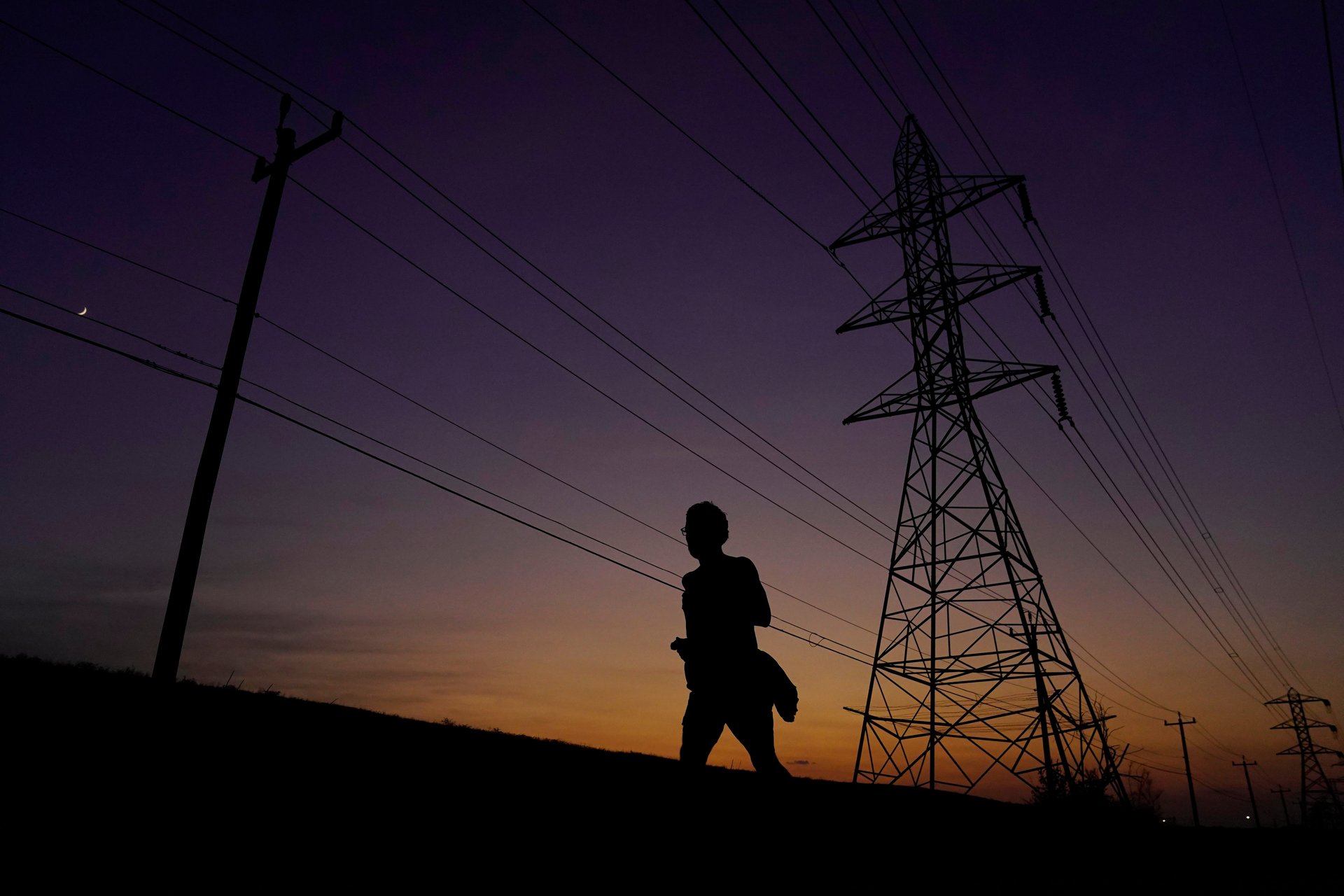Texas heat brings the state's power grid closest it has been to outages since 2021 winter storm
The sweltering heat wave in Texas has the power grid manager again asking residents to cut electricity use

HOUSTON (AP) — Texas’ power grid manager on Thursday again asked residents to cut their electricity use as the state endures another stretch of sizzling summer heat. The request carried fresh urgency, coming the day after the system was pushed to the brink of outages for the first time since a deadly winter blackout in 2021.
Suggested Reading
The request by the Electric Reliability Council of Texas, which serves most of the state’s 30 million residents, came a day after low energy reserves prompted the grid operator to issue a level 2 energy emergency alert. Operating reserves fell as demand surged amid the heat, and power from wind and solar energy sources proved insufficient, according to ERCOT.
Related Content
It was the first time the council entered emergency operations since a deadly 2021 ice storm knocked out power to millions of customers for days and resulted in hundreds of deaths.
The emergency status remained in place for about an hour Wednesday night until grid conditions returned to normal, ERCOT said in a post on X, formerly known as Twitter.
On Thursday, ERCOT asked residents to conserve power from 5 p.m. to 9 p.m. CDT as reserves were again expected to be low. Much of Texas was covered by heat advisories on Thursday, with high temperatures above 100 degrees Fahrenheit (37.8 Celsius) in Austin, Amarillo, Dallas, El Paso and Houston. Thursday’s call to conserve electricity was the 11th time ERCOT has made such a request since June 20, with most coming in the last three weeks.
“We request Texas businesses & residents conserve electricity use, if safe to do so,” ERCOT said in a tweet.
At about 9 p.m. CDT, the operating reserves had returned to normal conditions, meaning there was enough power for current demand, according to the ERCOT website. Around 7:30 p.m. the reserves dipped but were not low enough to prompt a level 1 energy emergency alert.
“Thank you to Texas residents and businesses for your conservation efforts, which along with improved wind conditions and additional reliability tools, helped us get through another tight peak time,” ERCOT tweeted.
Besides low reserves, ERCOT said it issued Wednesday's emergency alert because of a “drop in frequency,” which refers to the generation of electrical power. A spokesperson for ERCOT did not immediately return an email seeking comment on what caused the drop in frequency.
Thomas Overbye, a professor of electrical and computer engineering at Texas A&M University, said such a frequency drop is usually caused by a large power plant going offline, which could have a significant impact.
“These generators have been running, you know, a lot all summer. So that means that maintenance that we might want to do on a generator, they’re probably deferring into the time when the temperatures are a little cooler,” said Overbye, who also is director of the Texas A&M Engineering Experiment Station’s Smart Grid Center.
Republican Gov. Greg Abbott has said improvements since 2021 have stabilized the grid. Earlier this year, Texas lawmakers passed bills aimed at luring developers to generate more “on-demand” electricity, but the legislation did not extend to renewable sources.
Many Texans remain skeptical of the grid’s reliability.
“These situations, today and yesterday, I think are more isolated incidents. But yeah, I certainly understand people’s concern about this. It’s a reasonable concern,” Overbye said.
In June, just before this summer’s heat settled into Texas, Abbott vetoed a bill to strengthen energy efficiency in new construction, saying it wasn’t as important as cutting property taxes.
Texas is not connected to the rest of the country's power grid, unlike other U.S. states, leaving few options to pull power from elsewhere amid shortages or failures.
In May, regulators warned that demand may outpace supply on the hottest days.
Overbye said he believes the ongoing issues with the power grid will likely result in adding more power generation, particularly through natural gas, and more storage capacity.
“I think people are going to look at this and say, 'We can’t have Texas continually saying we don’t have enough electricity,'" Overbye said.
___
Follow Juan A. Lozano on X, the platform formerly known as Twitter: https://twitter.com/juanlozano70
